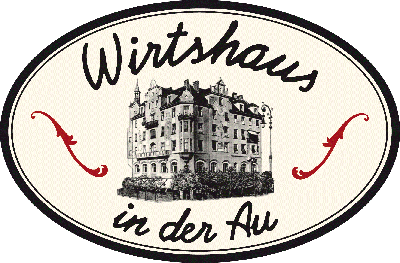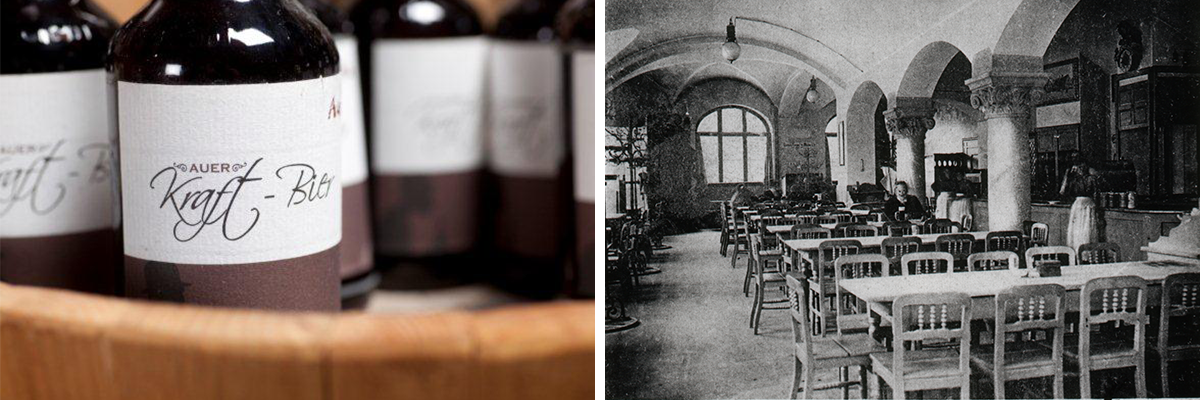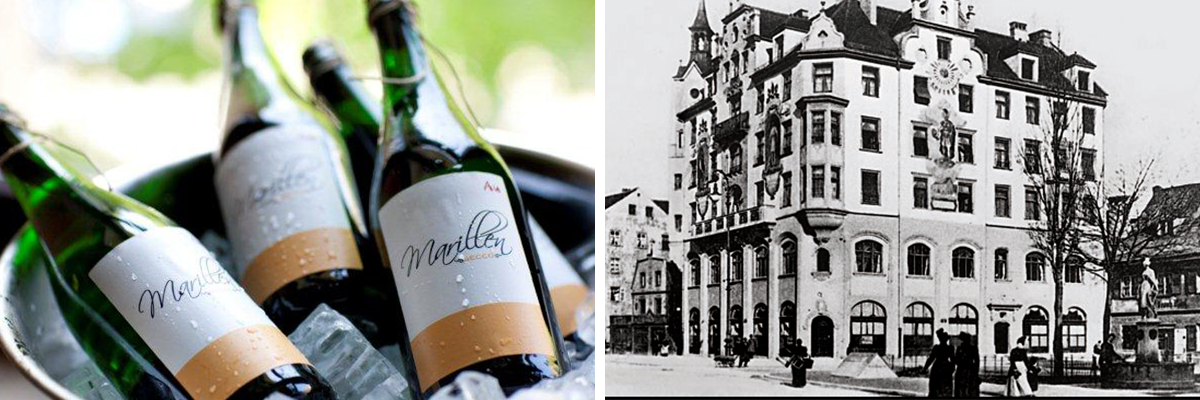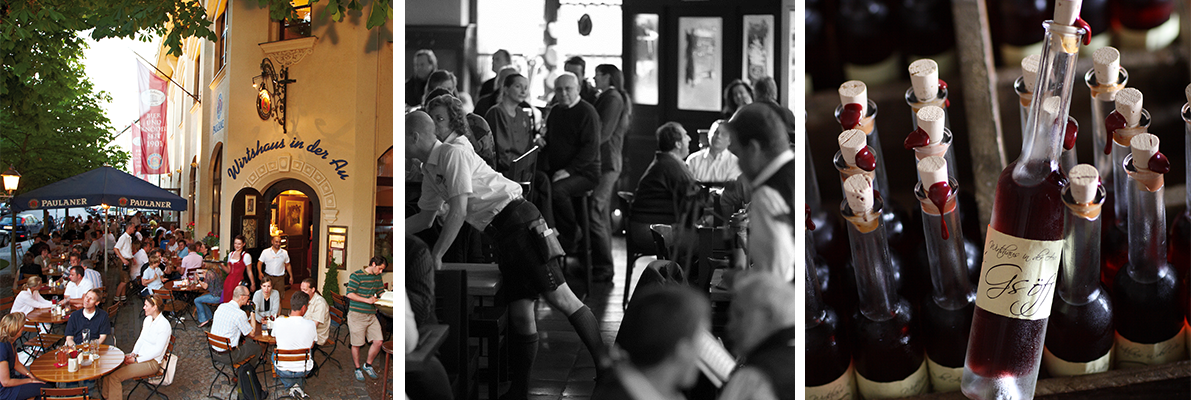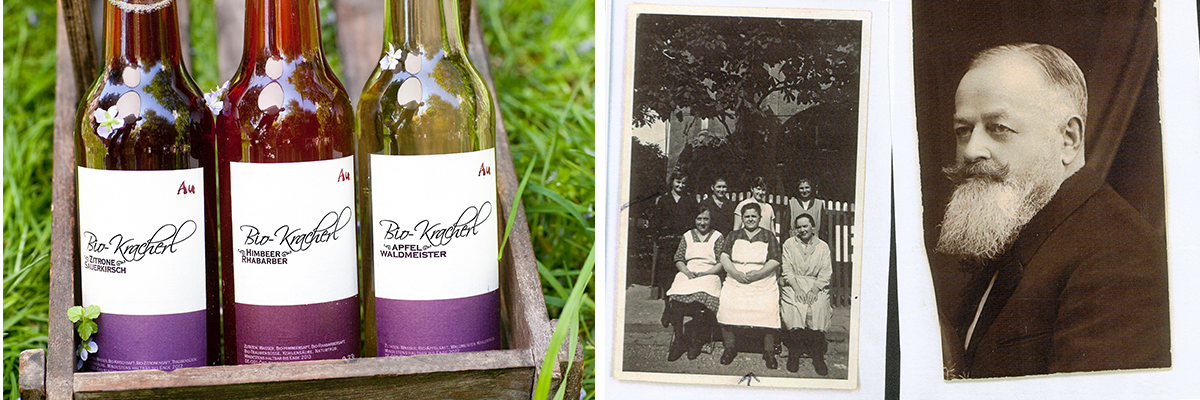History 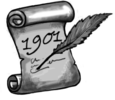
Since 1842
Beer and dumplings since 1901 – The Beginning
The premises of and the area around today’s “Wirtshaus in der Au” used to be a manufacturing district of the “Wagegg” family. Back then, the buildings housed military workers. In 1789, however, the building complex was closed and was taken in possession by the manufacturer “Brügelmann”. The man opened a spinning factory and dye-works inside the buildings, both of which he ran until 1816. Unfortunate for “Brügelmann”, the factories did not prove a boon, so that the factorybuilding- complex was split in ten separate properties, which were sold to private investors, eventually.
1842 until 1858
“Schmuckerbräu” – brewery and first pub
In 1842, the former master brewer of the “Heiliggeist-Spital – Schmuck” managed to take two of the estates in his possession. Here, he opened the brewery “Schmuckerbräu”, where beer was not only brewed but also sold. The small brewery, which produced a splendid beer, as well as the brewery’s own pub enjoyed great popularity from the beginning until the death of the owner, Mr. Schmucker. Afterwards, every now and then, other owners tried their luck running the property. None of which attained success. In 1858, therefore, the brewery had to be closed. Only the alehouse was still conducted as business.
1862 until 1901
Johann Wagner
In 1862, the landlord Johann Wagner and his wife, Susanne Wagner, who owned the alehouse “Tafernwirtschaft” at court in Salzburg at that time, bought up both the brewery and the alehouse. Henceforth, Johann Wagner, being an expert in the brewing business himself, not only ran the alehouse but also rebuilt the brewery. After his death in 1901, his son, Hans Wagner, who had mastered in brewing as well, inherited the property. Johann Wagner left him with respective means of money, which enabled him to put his plans into practice.
1901 until 1923
Hans Wagner
While the „Deutsches Museum“ (German Museum) was still in planning, Hans Wagner reopened the brewery. At the same time, he employed the architect Joseph Bauer, a local from the city district “Schwabing”, to create a grand new building as an addition to the brewery building. This annex later became today’s “Wirtshaus in der Au”. In October 1901, its doors were first opened for guests and the first beers and drinks were sold. The “Wagner” beer soon became very popular and the brewer master and landlord was soon known all around the city. His beer sales came to almost 40.000 hectoliters in his best years. Right where the alehouse was located back then, our guests still sit down in our restaurant today. Our banquet room “Valentinssaal”, already was used as a ball room back then. Since Hans Wagner was busy expending his business on a wide scale, he transmitted the brewery to the alehouse host “Ignaz Schmid” in 1923. In addition to the alehouse “Wagnerbräu”, Ignaz Schmid opened a cozy beer garden surrounded by a wooden fence in front of the building.
1897 until 1935
Karl Valentin and Hans Wagner
It was early in his times as the host of “Wagnerbräu”, when Hans Wagner took notice of a red-headed rascal called Valentin Ludwig Fey. The boy was born in “Zeppelinstraße”, just around the corner of the alehouse. At that time, he was in in the middle of his apprenticeship as a carpenter and already was a regular in the alehouse “Wagnerbräu”. Hans Wagner noticed the young man had a talent for comedy and introduced him to one of his regular guests, the zither player, Ignaz Heppner. Sponsored by Hans Wagner, the young boy Frey studied zither playing with Ignaz Heppner. Years later, when Valentin Fey- under the name of “Karl Valentin” - was already successful as a soloist, parodist and mimic, Hans Wagner and Valentin were to meet again. Hans Wagner had opened the hotel “Wagner” on “Sonnenstraße” right in the city center. The cabaret “Wien-München” (“Vienna-Munich”) belonged to the hotel, which was where Karl Valentin found his home as an artist. Ever since April 1909 he regularly performed his own repertoire of plays there. Wagner’s death in 1932 hit him hard and was difficult to cope with for Karl Valentin. However, Valentin remained faithful to the hotel. After he was forced to close his own theater, which he had found inside of the “Goethesaal” on “Leopolstraße” in 1931, due to lacking safety precautions, he opened his “Panoptikum mit Höllencafé” in the Wagner hotel in 1934. Unfortunately, the chamber of horrors inside of the hotel’s basement did not reach its expected success and had to be closed only one year later.
1939 until 1961
Damages during World War II and renovation works
After the death of the brewery owner, Hans Wagner, in 1936 the building of “Lilienstraße 51” was taken over by the city local bank “Stadtsparkasse München”. In 1939, the brewery was sold to a rescue company of the breweries Paulaner, Löwenbräu, Spaten, Pschorr and Augustiner. During the Second World War, in 1944, the whole brewery area was destroyed through bombing. The beer pub of the brewery was damaged on its northern side but was already rebuilt in 1945, so that guests and audience could access again. In 1956, the building became property of the brewery Paulaner alone. And in 1961, the pub was renovated and turned into a typical old Munich alehouse with a restaurant.
1963 until 1988
Munich’s first disco and the POP-Club
In 1963, the wild years of “Lilienstraße 51” began. On the upper floor, Munich’s first disco, Sahara Dancing, opened its doors to the public. One year later, the traditional restaurant on the ground floor turned into the “Crazy Alm”, a restaurant with live music. Here, the city’s wellknown band “Paul Würges” used to play their songs. One of the owners of both establishments was the famous singer “Caterina Valente”. In 1972, the “POP-Club” succeeded the “Sahara Dancing” disco with its DJ “Chuck Hermann”, who played Oldies, Pop and Boogie-Woogie in the Club until 1986. When the “POP-Club” had to close in 1986, the “Crazy Alm” gave up business as well. From 1987 onwards, the “Noodles/Peppermint Park” on the ground floor and the “Lilians Affair” on the first floor, tried their luck with their business in the building. Only shortly, however, until 1993...
Since 1993
Wirtshaus in der Au
In 1993, Florian Oberndorfer took over the alehouse and had it renovated completely. A new chapter in the history of the building in “Lilienstraße 51” had begun. With his “Wirtshaus in der Au” has opened one of Munich’s most beautiful alehouses, full of the unique charm only traditional Munich alehouses and inns used to have in the past. Today, the “Wirtshaus in der Au” is especially famous for Munich’s biggest dumplings and various, delicious dumpling creations. In 2000, after extensive renovation works, the banquet room “Valentinssaal” was opened on the upper floor of the building.
Since 2002
The “Münchner Knödelei” – „Au’r“ Oktoberfest tent
As “Wirtshaus in der Au” already serves Munich’s biggest potato dumpling, it suggested itself that it was about time to dedicate a separate establishment to dumplings, which are, in the end, the one and only traditional symbol of Bavarian food culture: the idea of the “Münchner Knödelei” evolved. In 2002, the tent of “Wirtshaus in der Au” was first present on Munich Oktoberfest. For the team of “Wirtshaus in der Au” it was a dream come true. The passionately created and adorned Oktoberfest tent seats 300 people on its inside and 240 in the beer garden. Inside of the quaint tent as well as from the sidewalk sale of the tent, which looks just like an old giant oven, people can order various dumpling creations. Here, all sorts of guest feel welcome and comfortable. Every day at lunch time, guests can enjoy our Bavarian lunch menu, while listening to traditional livemusic. In the Evenings the showband “Take Five” (http://www.takefive-live.de/) ensures a lot of fun and the proper “Oktoberfest” atmosphere.
